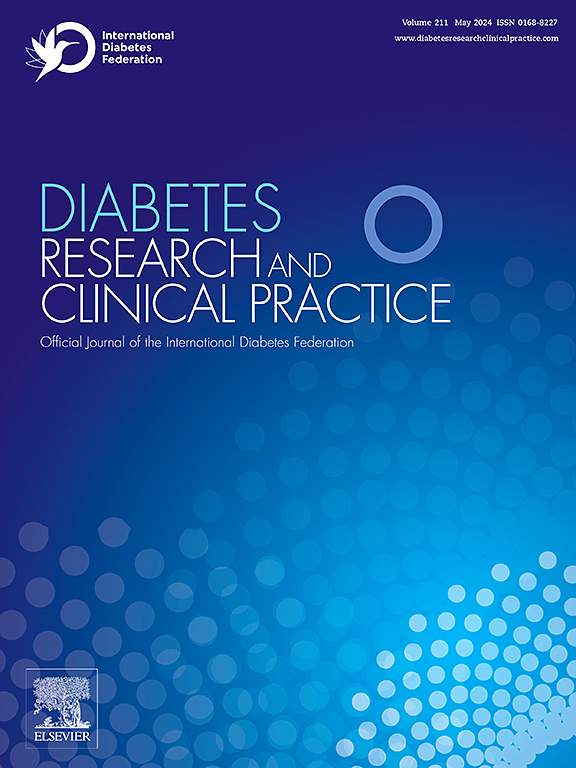Triglyceride-glucose index in adolescents with type 1 diabetes mellitus
IF 6.1
3区 医学
Q1 ENDOCRINOLOGY & METABOLISM
引用次数: 0
Abstract
Background and Aim
Even though HbA1c can be obtained easily and accurately by blood test, the cost may limit its availability for some patients and their proper follow-up. The triglyceride-glucose index has been shown to have an association with HbA1c in other populations, but it hasn’t been studied in adolescents with T1DM yet. The aim of this study is to assess the association of TyG index with glycaemic control in adolescents with T1DM.
Methods
This cross-sectional study included a sample of 36 adolescents (50% female) from the paediatric unit of the San Juan Hospital in Alicante (Spain). Data on sociodemographics, growth parameters, glycaemic control, and blood tests results were collected after routine visits.
Results
A higher TyG index was statistically associated with a higher BMI, percentile and z-score, a higher triglyceride, HbA1c and glucose levels and with the triglycerides/HDL, the total cholesterol/HDL, the TyG-BMI and the TyG-waist circumference indexes.
Conclusion
The TyG index is a simple and non-invasive biomarker that could serve as a valuable adjunct to HbA1c monitoring in adolescents with T1DM. It may have a potential utility as a screening tool for early identification of patients at risk for developing metabolic complications such as insulin resistance and dyslipidemia.
求助全文
约1分钟内获得全文
求助全文
来源期刊

Diabetes research and clinical practice
医学-内分泌学与代谢
CiteScore
10.30
自引率
3.90%
发文量
862
审稿时长
32 days
期刊介绍:
Diabetes Research and Clinical Practice is an international journal for health-care providers and clinically oriented researchers that publishes high-quality original research articles and expert reviews in diabetes and related areas. The role of the journal is to provide a venue for dissemination of knowledge and discussion of topics related to diabetes clinical research and patient care. Topics of focus include translational science, genetics, immunology, nutrition, psychosocial research, epidemiology, prevention, socio-economic research, complications, new treatments, technologies and therapy.
 求助内容:
求助内容: 应助结果提醒方式:
应助结果提醒方式:


